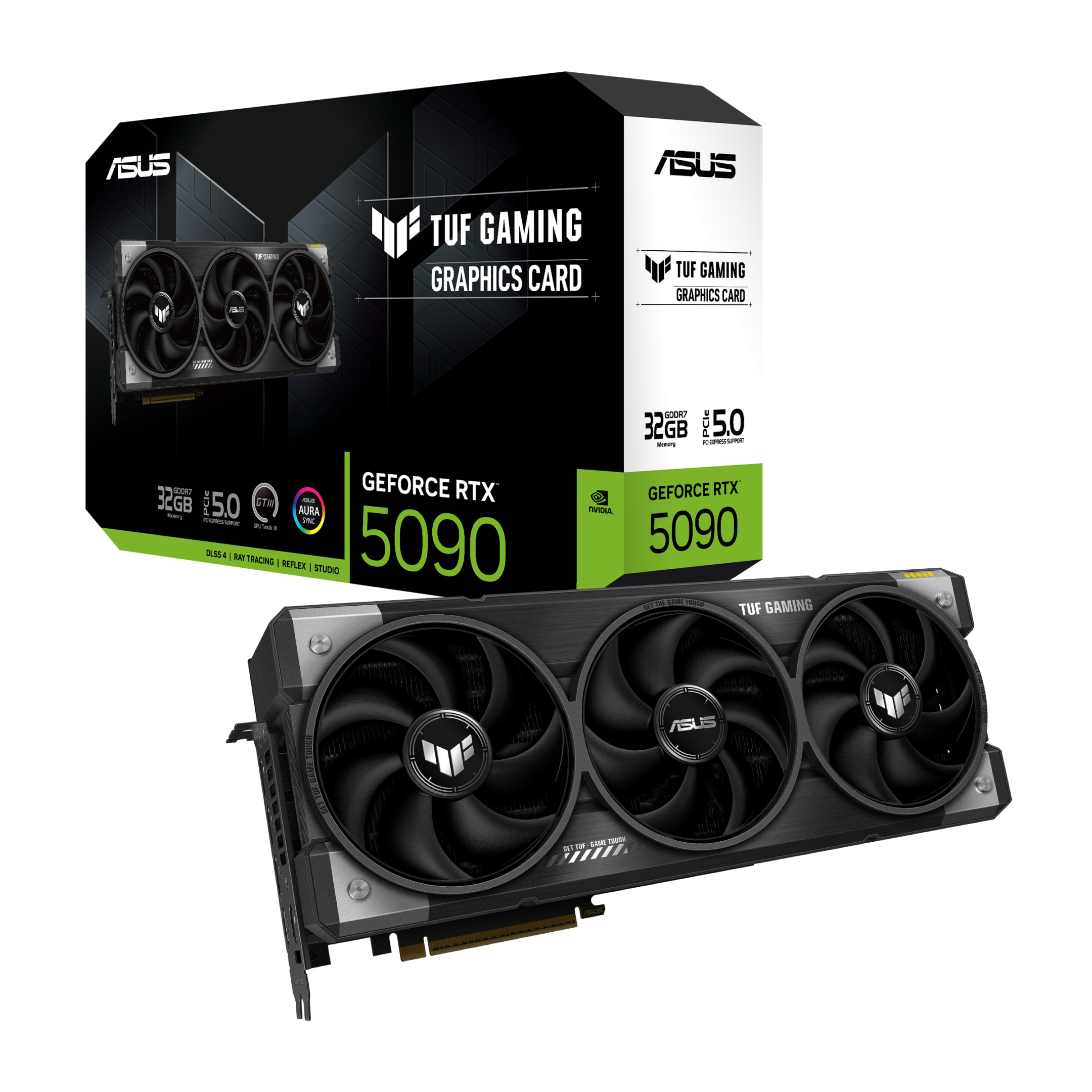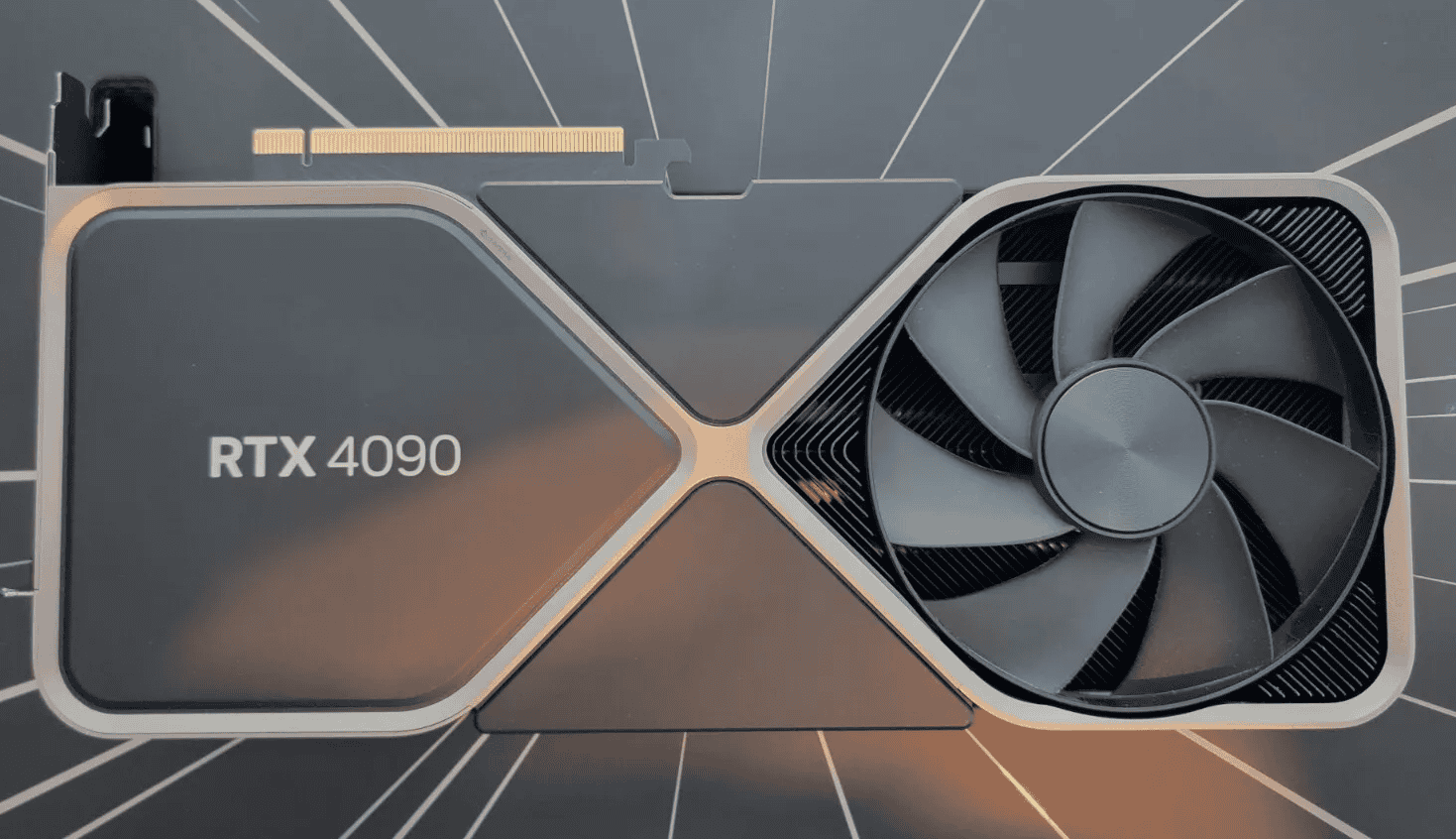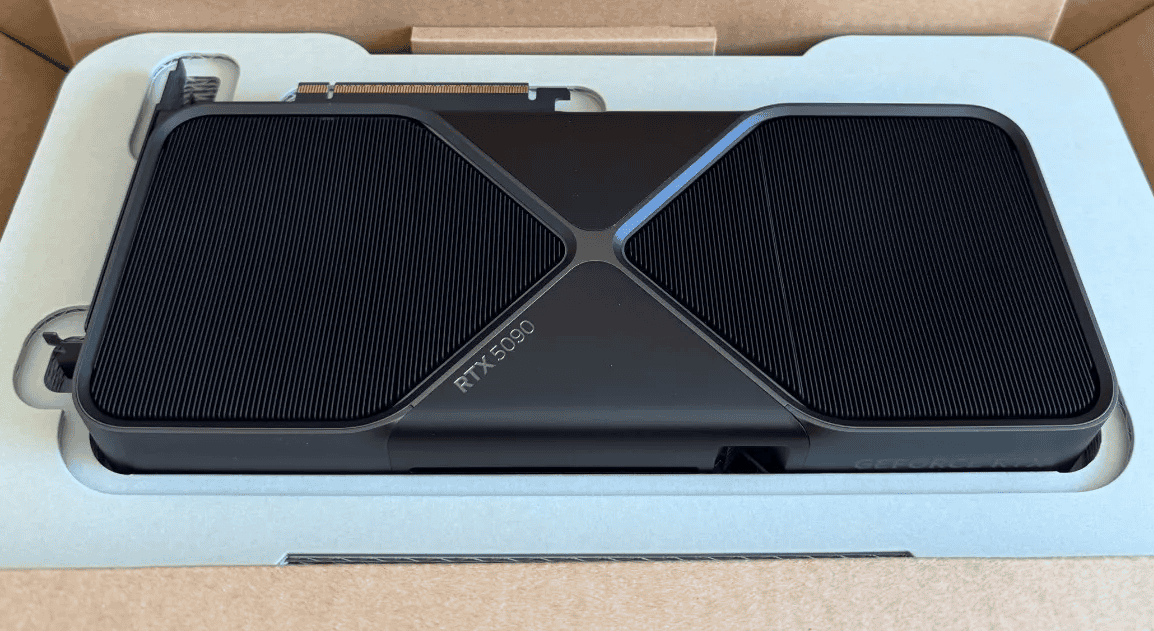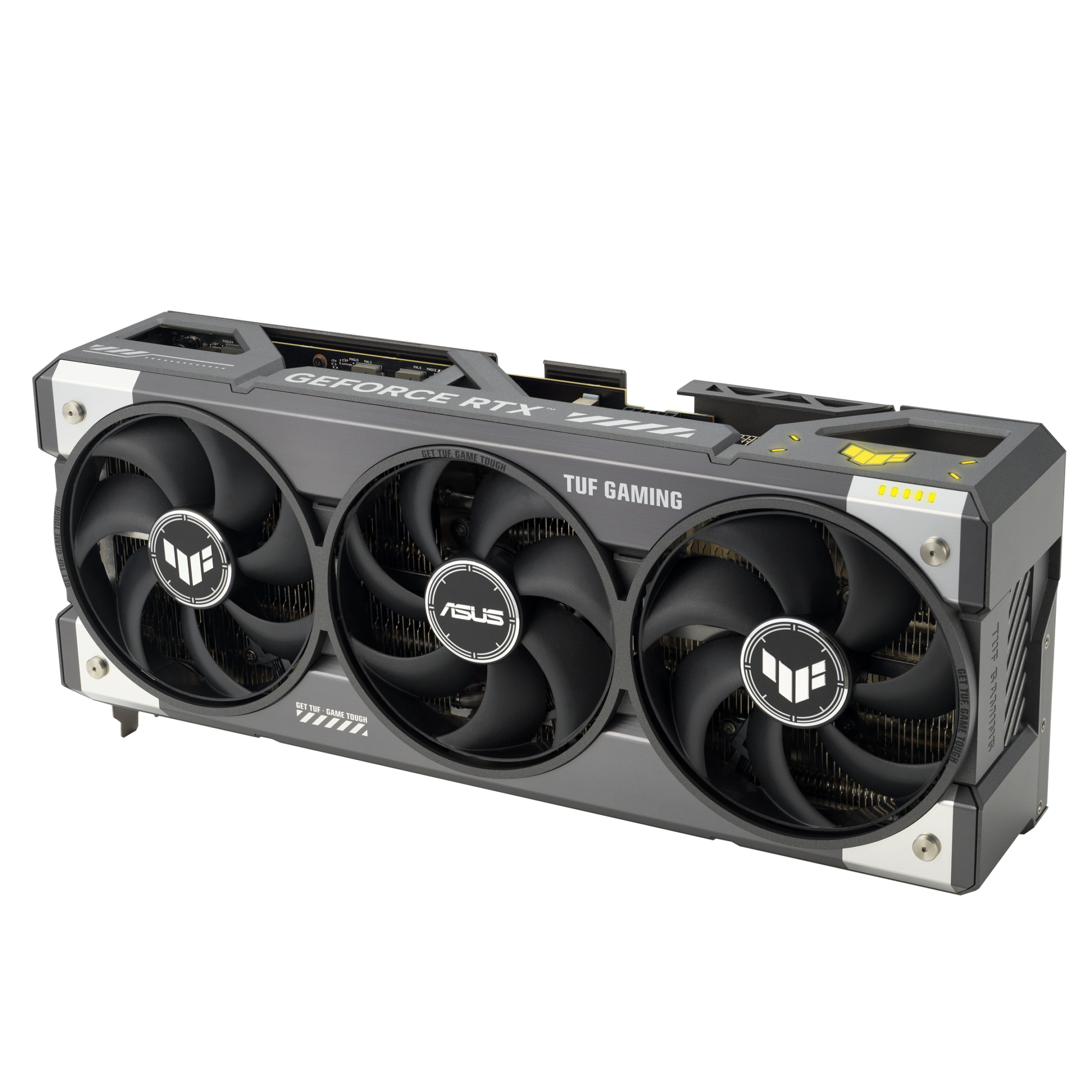Nvidia’s latest graphics cards, the RTX 5090 and RTX 4090, showcase impressive advancements in gaming technology. The RTX 5090 builds on its predecessor’s strengths, offering enhanced performance for gamers and content creators alike. Benchmarks indicate the RTX 5090 delivers up to a 9% performance boost over the RTX 4090 in gaming scenarios, with even larger gains in AI-related tasks.
The RTX 5090 introduces new features that set it apart from the RTX 4090. It utilizes TSMC’s 4NP process node, an improvement over the 4N node used in the RTX 4090. This architectural upgrade contributes to the 5090’s performance gains and potentially improved power efficiency.
For gamers seeking the ultimate experience, the choice between these two high-end graphics cards may come down to specific use cases and budget considerations. While the RTX 5090 offers superior performance, the RTX 4090 remains a powerful option with advantages in thermal management, running up to 6.7% cooler in some tests.

Comparing Top-Tier Graphics Cards
Performance Benchmarks: A Clear Winner
The RTX 5090 has demonstrated substantial performance gains over the RTX 4090 in various benchmarks. Early results show improvements ranging from 25% to 40% in key areas like 4K gaming and ray tracing. This difference is significant and will be noticeable to gamers. For example, a game running at 60 frames per second (FPS) on the 4090 might achieve 75-90 FPS on the 5090 at the same settings. These gains translate to smoother gameplay, especially at higher resolutions.
Memory: The GDDR7 Advantage
A major factor contributing to the RTX 5090’s improved performance is its use of GDDR7 memory. This new standard offers significantly higher bandwidth than the GDDR6X memory in the RTX 4090. Increased bandwidth allows the GPU to access and process data more quickly, which is crucial for rendering complex scenes and textures. Think of it like upgrading from a narrow country road to a multi-lane highway; more data can flow at once.
Power Consumption and Cooling Considerations
The increased power of the RTX 5090 comes with a higher Thermal Design Power (TDP). This means the card consumes more power and generates more heat than the RTX 4090. Users considering the 5090 should ensure they have a power supply capable of handling the increased demand and a robust cooling solution to prevent thermal throttling, which can reduce performance. A high-quality air cooler or a liquid cooling setup is recommended.

Pricing: A Premium for Top Performance
The RTX 5090 is a premium product with a premium price tag. It is more expensive than the RTX 4090. This price difference is a key factor for many potential buyers. While the 5090 offers better performance, the 4090 may still represent a good value for those not seeking the absolute best and who are more budget-conscious.
Specifications Comparison
| Feature | RTX 5090 | RTX 4090 |
|---|---|---|
| Memory Type | GDDR7 | GDDR6X |
| Performance Increase (Estimated) | 25-40% | N/A |
| Power Consumption | Higher | Lower |
| Price | Higher | Lower |
Who Should Upgrade?
The RTX 5090 is a great choice for gamers who want the best possible performance and are willing to pay for it. If you’re currently using an older graphics card and want to play the latest games at high resolutions and with ray tracing enabled, the 5090 is a significant upgrade. However, if you already own an RTX 4090, the performance gain might not justify the cost of upgrading unless you’re a hardcore enthusiast always wanting the absolute cutting edge.

Future of High-End Graphics Cards
The release of the RTX 5090 sets a new benchmark for graphics card performance. It also puts pressure on AMD to respond with its own high-end offerings. This competition is good for consumers, as it drives innovation and could lead to more competitive pricing in the future. The ongoing development of new memory technologies and architectural improvements will continue to push the boundaries of what’s possible in PC gaming.
Exploring the RTX 4090 as an Alternative
While the RTX 5090 is the latest and greatest, the RTX 4090 remains a powerful graphics card. It’s still capable of delivering excellent performance in most games, and its price may become more attractive with the release of the 5090. For gamers on a budget, or those who don’t need the absolute peak performance, the 4090 is a viable option. It offers a great balance of price and performance, and it can handle the demands of most modern games. Choosing between the 5090 and 4090 depends on your budget and how important the extra performance boost is to you. Consider your specific needs and make an informed decision.
Additional Points of Comparison: RTX 5090 vs. RTX 4090
While the core performance differences between the RTX 5090 and 4090 are significant, several other factors could influence a buyer’s decision.
Power and Thermal Management
The RTX 5090’s higher TDP (575W) compared to the RTX 4090 (450W) isn’t just about power consumption; it also impacts heat generation. This means the 5090 will likely require a more robust cooling solution. While the Founders Edition of the 5090 features a dual flow-through design, third-party manufacturers may offer even more advanced cooling systems. Consider your case’s airflow and cooling capacity when choosing between these cards. A poorly ventilated case could lead to thermal throttling on the 5090, negating some of its performance benefits.
8K Gaming and Beyond
While 4K gaming is currently the standard for high-end gaming, the RTX 5090 is clearly geared towards the future of 8K gaming. Its increased memory bandwidth and raw power make 8K gaming a more realistic prospect, especially with the continued development of upscaling technologies like DLSS 4. If you’re planning on upgrading to an 8K display in the future, the 5090 is the more future-proof option. The 4090 can handle some 8K gaming, but the 5090 is designed for it.
Ray Tracing Performance
Ray tracing is a demanding rendering technique that creates more realistic lighting and shadows. The RTX 5090 shows a notable improvement in ray tracing performance compared to the 4090. This means smoother gameplay and more visually impressive effects in games that utilize ray tracing. If ray tracing is a priority for you, the 5090 is the clear winner.
DLSS and Upscaling Technologies
Both the RTX 5090 and 4090 support NVIDIA’s Deep Learning Super Sampling (DLSS) technology. DLSS uses AI to upscale lower-resolution images, improving performance without sacrificing too much visual quality. The 5090, with its more powerful hardware, will likely benefit more from future iterations of DLSS, such as DLSS 4. This means better performance and image quality in games that support the latest upscaling technologies.
Availability and Market Dynamics
Initially, the RTX 5090 will likely be in high demand and short supply, which could lead to inflated prices. The RTX 4090, having been on the market for a while, might be more readily available, and its price could potentially decrease as a result of the 5090’s release. Consider your budget and how urgently you need a new graphics card when weighing these factors.
Value Proposition
While the RTX 5090 offers better performance, the RTX 4090 might offer better value, especially if its price drops. Consider the price-to-performance ratio. If the price difference between the two cards is significant, the 4090 could be a more sensible choice for some gamers. However, if you’re willing to pay a premium for the best performance, the 5090 is the way to go.
Future-Proofing
The RTX 5090, with its cutting-edge technology like GDDR7 memory and PCIe 5.0 support, is more future-proof than the RTX 4090. If you want a graphics card that will remain relevant for years to come, the 5090 is the better investment.
Third-Party Cards
Both the RTX 5090 and 4090 will be available from various third-party manufacturers like ASUS, MSI, and Gigabyte. These cards often come with custom cooling solutions, factory overclocks, and different aesthetic designs. Consider these options when making your decision, as they can offer different price points and features.
Key Takeaways
- The RTX 5090 outperforms the RTX 4090 by up to 9% in gaming and shows significant gains in AI tasks
- New architecture and process node improvements contribute to the RTX 5090’s performance boost
- Both cards offer top-tier gaming experiences, with the choice depending on specific needs and budget
Technical Innovations and Architecture
The RTX 5090 marks a significant advancement in graphics card technology, delivering improved performance compared to its predecessor. Despite its high price, the 5090 is the leading option for gamers seeking top-tier performance. Ongoing advancements in GPU technology indicate that even more impressive cards will be released in the future. It’s important for consumers to choose a card that meets their needs and budget.
The RTX 5090 and RTX 4090 represent significant leaps in GPU technology. These graphics cards showcase advancements in core architecture, memory systems, and specialized processing units.
Comparative Architecture Overview
The RTX 5090 uses Nvidia’s new Blackwell architecture, while the RTX 4090 is based on the Ada Lovelace architecture. Blackwell introduces improvements in energy efficiency and transistor density. The RTX 5090 packs 92 billion transistors, a 30% increase over the RTX 4090’s 70 billion. This allows for more processing units and enhanced performance.
Both GPUs use TSMC’s 4nm process node, but the RTX 5090 utilizes an optimized 4NP variant. This results in better power efficiency and higher clock speeds.
GPU Core Technology: CUDA Cores and Tensor Cores
The RTX 5090 boasts 33% more CUDA cores than its predecessor. This translates to improved general computing and graphics rendering capabilities. Exact core counts are:
- RTX 5090: 18,432 CUDA cores
- RTX 4090: 16,384 CUDA cores
Tensor cores, crucial for AI and machine learning tasks, have also seen upgrades. The RTX 5090’s tensor cores offer up to 2x performance in generative AI workloads compared to the RTX 4090.
Ray Tracing Capabilities and RT Cores
Ray tracing performance has taken a significant leap with the RTX 5090. Its RT cores are more efficient and numerous than those in the RTX 4090. This results in smoother, more realistic lighting and reflections in games and 3D applications.
Early benchmarks suggest a 40-50% improvement in ray tracing performance for the RTX 5090 over the RTX 4090. This enhancement allows for more ray-traced effects at higher resolutions and frame rates.
Memory Technology: GDDR6X vs. GDDR7
The RTX 5090 introduces GDDR7 memory, a major upgrade from the GDDR6X used in the RTX 4090. Key differences include:
- Bandwidth: GDDR7 offers 1.8 Tbps, compared to 1.0 Tbps for GDDR6X
- Capacity: Both GPUs feature 24GB of VRAM
- Memory Bus: The RTX 5090 retains the 384-bit bus of its predecessor
GDDR7’s increased bandwidth allows for faster data transfer between the GPU and memory. This is particularly beneficial for high-resolution gaming and complex computational tasks.
Performance Metrics and Gaming Benchmarks
The RTX 5090 outperforms its predecessor in several key areas. Significant improvements are seen in frame rates, AI capabilities, and power efficiency.
Frame Rate and Resolution: 4K Gaming and Beyond
The RTX 5090 shows impressive gains in 4K gaming performance. It delivers up to 50% higher frame rates compared to the RTX 4090 in many popular titles. This boost allows for smoother gameplay at 4K resolution with ray tracing enabled.
At 8K resolution, the RTX 5090 maintains playable frame rates in demanding games. This was often challenging for the RTX 4090. The increased VRAM capacity of 32GB, up from 24GB, contributes to better performance at higher resolutions.
Benchmark results reveal:
- Cyberpunk 2077 (4K, Ultra settings): RTX 5090 – 120 FPS, RTX 4090 – 85 FPS
- Red Dead Redemption 2 (4K, Max settings): RTX 5090 – 145 FPS, RTX 4090 – 100 FPS
Enhancements in AI Workloads and Generative AI
The RTX 5090 excels in AI-related tasks. Its improved Tensor cores offer up to 70% faster performance in machine learning and generative AI applications.
Key improvements:
- Faster training times for AI models
- Enhanced real-time AI-driven effects in games
- Improved performance in content creation tools using AI
The card’s AI capabilities benefit tasks like video upscaling, image generation, and natural language processing. This makes it valuable for both gamers and creative professionals.
DLSS Optimization: DLSS 4 and Gaming Titles
DLSS 4 technology on the RTX 5090 provides superior image quality and performance gains. It offers better anti-aliasing and increased frame rates compared to DLSS 3 on the RTX 4090.
DLSS 4 improvements:
- Reduced artifacts in motion
- Enhanced image sharpness
- Wider game support at launch
Popular titles optimized for DLSS 4 show 20-30% higher frame rates on the RTX 5090 compared to DLSS 3 on the RTX 4090. This boost is particularly noticeable in ray-traced scenes.
Power Efficiency and Thermal Design
Despite its performance gains, the RTX 5090 is more power-efficient than its predecessor. It has a TDP of 450W, similar to the RTX 4090, but delivers higher performance per watt.
Thermal improvements include:
- Advanced vapor chamber design
- Optimized fan curves for quieter operation
- Better heat dissipation under load
These enhancements result in lower operating temperatures and reduced noise levels compared to the RTX 4090. This is beneficial for long gaming sessions and intensive workloads.
Pricing and Accessibility for Gamers and Creators
The RTX 5090 comes with a premium price tag, reflecting its top-tier performance. It’s priced slightly higher than the RTX 4090’s launch MSRP.
Pricing considerations:
- RTX 5090 Founders Edition: $1,799
- Custom AIB models: $1,899 – $2,199
While expensive, the performance gains may justify the cost for professionals and enthusiasts. The RTX 4090 remains a strong alternative for those seeking high performance at a lower price point.
Availability is expected to be limited at launch, with increased supply in the following months. This may affect initial pricing and availability for early adopters.
Frequently Asked Questions
The RTX 5090 brings significant improvements over the RTX 4090 in various areas. These enhancements impact gaming, professional tasks, AI applications, power efficiency, and virtual reality experiences.
What is the performance difference between the RTX 5090 and the RTX 4090?
The RTX 5090 offers a substantial performance boost compared to the RTX 4090. It features 21,760 CUDA cores, a 33% increase from the RTX 4090’s 16,384 cores.
This core count increase, combined with higher clock speeds, results in a significant performance jump. In some applications, the RTX 5090 can deliver up to a 2x performance improvement over its predecessor.
Can we expect the RTX 5090 to surpass the gaming capabilities of the RTX 4090?
The RTX 5090 is set to outperform the RTX 4090 in gaming scenarios. Its increased core count and improved architecture allow for higher frame rates and better ray tracing performance.
The new GPU also introduces DLSS 4, an upgraded version of Nvidia’s AI-powered upscaling technology. This feature can potentially double the frames per second in supported games compared to the RTX 4090.
What advancements does the RTX 5090 bring over the RTX 4090 for professional rendering tasks?
For professional rendering tasks, the RTX 5090 offers significant advantages. Its increased CUDA core count and improved architecture result in faster render times and more efficient handling of complex scenes.
The GPU’s enhanced memory bandwidth and larger VRAM capacity also contribute to improved performance in professional applications. This allows for smoother workflow with high-resolution textures and complex 3D models.
Is the RTX 5090 a significant upgrade for AI and machine learning applications compared to the RTX 4090?
The RTX 5090 represents a major leap forward for AI and machine learning applications. It features upgraded Tensor cores, which are specialized for AI computations.
In generative AI testing, the RTX 5090 demonstrated a 2x performance increase over the RTX 4090. This improvement allows for faster training of AI models and more efficient inference in machine learning tasks.
How does the power efficiency of the RTX 5090 compare with that of the RTX 4090?
While specific power consumption figures for the RTX 5090 are not yet available, it is expected to offer improved performance per watt compared to the RTX 4090.
Nvidia’s focus on efficiency in recent generations suggests that the RTX 5090 will deliver its performance boost without a proportional increase in power consumption. This improved efficiency is crucial for users concerned about energy costs and system cooling requirements.
What are the implications of the RTX 5090’s performance for virtual reality applications against the RTX 4090?
The RTX 5090’s enhanced performance has significant implications for virtual reality applications. Its increased processing power allows for higher frame rates and resolutions in VR environments.
The GPU’s improved ray tracing capabilities also contribute to more realistic lighting and reflections in virtual worlds. This results in a more immersive and responsive VR experience compared to what the RTX 4090 can offer.







